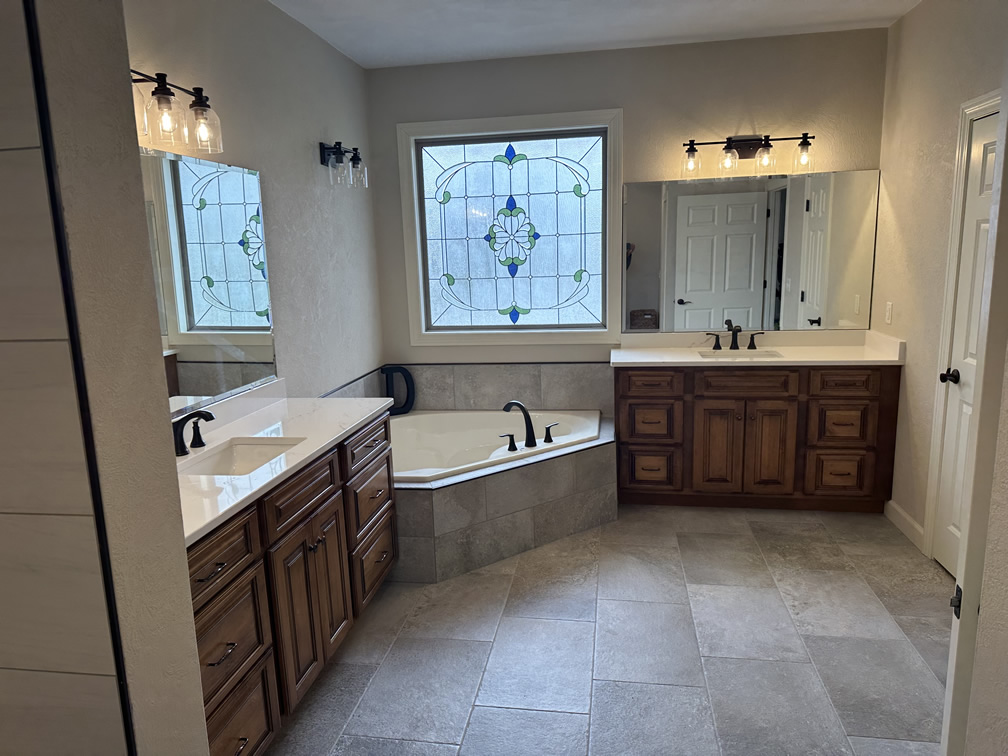An often overlooked yet crucial aspect of home renovation is bathroom remodeling. The bathroom is not just a place of practicality; it serves as a personal sanctuary, a place of relaxation, and a reflection of your style and taste. Hence, updating and enhancing this space can significantly improve your home’s comfort, aesthetics, and even increase its value. Bathroom remodeling is a vital home improvement project that demands careful planning and execution. Before embarking on a bathroom remodeling project, there are several factors to consider. First, you need to identify the primary purpose of the remodel. Are you updating it for comfort and functionality, or are you aiming to increase your home’s resale value? Your purpose will significantly influence your design choices and budget allocation. Secondly, consider your budget. It is essential to map out financial plans and set realistic expectations to avoid unexpected expenses midway through the project. The size and layout of your bathroom are also crucial factors. You need to consider the space available and how to optimize it to suit your needs. For instance, you might want to install a double vanity or a large soaking tub, but these options might not be feasible if your bathroom is relatively small. Additionally, consider the plumbing and electrical system in your bathroom. They may need to be upgraded or relocated, especially in older homes. Finally, think about the overall design and aesthetic you want to achieve. This includes the color scheme, fixtures, lighting, and other decorative elements. Bathroom remodeling is a significant project that requires careful planning and consideration. By taking into account the purpose, budget, size, layout, plumbing, electrical system, and design, you can effectively navigate the remodeling process and create a bathroom that meets your needs and enhances your home’s value.
Planning Your Bathroom Remodeling
The first step in planning your bathroom remodeling is setting a budget. Remember, the cost of a bathroom remodel can vary significantly depending on the scope of the work, the materials selected, and whether or not you decide to hire a professional. Start by determining how much you’re willing and able to spend. Once you’ve established your budget, it’s time to start planning the specifics of the remodel. Deciding on the style and design of your bathroom is an exciting part of the planning process. Think about what you want the room to look like when it’s finished. Do you want a traditional, contemporary, or minimalist design? What color scheme do you have in mind? Are there any specific features or fixtures you’d like to include? It can be helpful to look at home design magazines or websites for inspiration. Understanding the importance of efficient space planning is crucial in bathroom remodeling. You must consider the layout and size of the room and plan accordingly. For instance, you may need to relocate the toilet or sink to make the room more functional. Also, think about storage solutions and how to make the most of the available space. Finally, choosing between a DIY and hiring a professional is a major decision. If you have the skills and experience, doing it yourself can save money. However, a professional can ensure the job is done correctly and efficiently, and they can also help with design ideas and material selection. Consider the complexity of the project, your skill level, and the amount of time you have available before making your decision.
Selecting the Right Materials
Moving on from the planning phase, one of the challenging yet exciting parts of the bathroom remodeling process is selecting the right materials. This involves a keen understanding of your needs, preferences, and budget. When it comes to bathroom flooring, there are numerous options available. Ceramic tiles are popular for their durability and water resistance, while vinyl flooring is loved for its cost-effectiveness and ease of installation. Other options include stone tiles, which provide an upscale look, and engineered wood, offering warmth and elegance. Consider factors such as the bathroom’s usage, the level of maintenance required, and your budget when choosing the flooring. Selecting the right tiles for the bathroom is another critical decision. Tiles come in various materials, including ceramic, porcelain, glass, and stone. When choosing, consider their aesthetic appeal, durability, maintenance needs, and how they complement the overall design of your bathroom. For instance, porcelain tiles are highly durable and water-resistant, making them ideal for bathrooms. Next on the list are bathroom fixtures. When choosing fixtures like faucets, showerheads, and lighting, look for quality, style, and functionality. Consider fixtures that are water-efficient to save on water bills. Also, ensure the style of the fixtures aligns with your overall bathroom design. Lastly, selecting the right bathroom vanity and countertop is vital. The vanity serves as a focal point in the bathroom and provides necessary storage space. When choosing the vanity, consider the available space, storage needs, and the number of sinks you want. For the countertop, materials like granite, quartz, and marble are popular for their durability and elegance. Always consider the maintenance needs and cost when choosing the countertop. In summary, selecting the right materials for your bathroom remodel is a critical step that requires careful consideration. Your choice of materials will significantly influence the bathroom’s functionality, durability, and aesthetic appeal.
Finding and Hiring the Right Professionals
The journey of bathroom remodeling continues beyond the selection of materials. Your next significant step is finding and hiring the right professionals for the job. This process might seem overwhelming, but with the right approach, it can be straightforward and hassle-free. Start by conducting a thorough search for reliable contractors. This can be achieved through various methods, including word-of-mouth referrals, online reviews, and visiting local home improvement stores. It is advisable to shortlist a minimum of three contractors for comparison. Once you have a list, examine their experience, qualifications, and certifications. Ensure they have a valid contractor’s license and insurance to protect you from any liabilities during the remodeling process. In the process of vetting potential contractors, there are crucial questions to ask. Understanding their approach to the job, the number of similar projects they’ve handled, and their projected timeline can provide a clearer picture of their expertise. Also, inquire about their subcontractors, if any. This will help you understand who will be in your home and their roles. Don’t shy away from asking for references and actually contacting them to gain first-hand insights into the contractor’s workmanship and reliability. Understanding the contractor’s quote is another pivotal aspect of the hiring process. A detailed quote should outline the cost of materials, labor, and any other expenses related to the project. Be sure to request quotes from all shortlisted contractors for an accurate comparison. If there are any points of confusion or if something seems amiss, don’t hesitate to ask for clarification. Finally, once you’ve chosen your preferred contractor, it’s time to negotiate the contract and set timelines. The contract should include a detailed scope of work, payment schedule, potential penalties for missed deadlines, and terms for changes or unexpected tasks. Ensure you are comfortable with the timelines set, as rushing a bathroom remodeling project can lead to unsatisfactory results. By taking these steps, you can ensure that you hire professional and reliable contractors who will help you realize your dream bathroom.
Managing the Remodeling Process
Once you’ve successfully hired a competent remodeling team, the real work begins. The first step in managing the remodeling process is preparing your home for the renovation. This involves clearing out the bathroom and creating a temporary substitute if necessary. Remember to protect your belongings from dust and debris by covering them or relocating them to a safe place. Be sure to discuss the schedule with your contractor to understand when your bathroom will be inaccessible and make necessary arrangements. After the renovation kicks off, it’s essential to keep a daily check on the progress. Daily monitoring of the remodeling process helps you stay updated on the developments, and it also enables you to catch any deviations from the plan early. Always remember that your involvement is crucial even though you have a team of professionals on the job. Effective communication forms the backbone of any project, and bathroom remodeling is no exception. Maintain regular contact with the remodeling team, ask questions, and share your feedback. Remember, your vision drives the project, and hence, your inputs are invaluable. Regularly discussing the project’s status with your contractor can alleviate any concerns and ensure that your expectations are met. However, even with the best-laid plans, unexpected issues can arise during the renovation. It’s crucial to remain flexible and patient when dealing with such problems. Whether it’s a delay in material delivery, unforeseen plumbing issues, or an unexpected change in the design plan, it’s essential to work closely with your contractor to find the best solution. Trust in their expertise and experience to navigate through these challenges and bring your vision to life.
Finalizing and Finishing Touches
After managing the entire bathroom remodeling process diligently, it’s time to move on to the concluding stages of the project. This phase involves the inspection and quality check of the finished project. A thorough inspection is crucial to ensure that all the fixtures and installations are in place, functioning correctly, and meet your expectations. It is advisable to do this in the company of your contractor, as they can provide insights into the installation process and the functionality of the new elements in your bathroom. The next step is adding the final touches to your remodeled bathroom. This involves accessorizing your new space with items such as towels, shower curtains, rugs, and other decor that matches the style and color scheme of your new bathroom. It’s also the perfect time to add those personal touches that make the space uniquely yours, such as a favorite piece of art or a special memento. The final touches not only enhance the aesthetic of your bathroom but also increase the comfort and functionality of the space. Once all final touches have been added, your new bathroom is ready for use. However, the process doesn’t end here. Regular maintenance of your newly remodeled bathroom is necessary to keep it in pristine condition. This includes regular cleaning, checking for leaks or plumbing issues, and addressing any minor repairs promptly. Regular maintenance will help prolong the lifespan of your new bathroom and keep it looking its best for many years to come. In summary, the final phases of the bathroom remodeling process involve a meticulous inspection and quality check, adding final touches to enhance the look and feel of your new space, and implementing a regular maintenance routine to keep your new bathroom in top-notch condition.
Conclusion
In conclusion, the value of a well-planned bathroom remodel cannot be overstated. It not only enhances the aesthetic appeal and functionality of your home but also significantly boosts its market value. However, it’s important to remember that a successful bathroom remodel is more than just a one-time project; it’s a process that requires careful planning, execution, and maintenance. The first step in the bathroom remodeling process is planning. This involves identifying your remodeling objectives, setting a budget, and creating a design plan. Remember, your plan should not only reflect your personal style but also align with the overall theme of your home. The next step is execution, which involves hiring a reliable contractor, purchasing the necessary materials, and supervising the remodeling work. Be sure to communicate your expectations clearly to your contractor and regularly monitor the progress of the work to ensure that it’s in line with your plan. Finally, after the completion of the remodeling work, it’s important to conduct a thorough inspection and quality check. This will help you identify any issues or defects that might need immediate attention. Once you’re satisfied with the work, you can proceed to add personal and functional accessories to give your bathroom the final touches. However, the process doesn’t end here. To enjoy your newly remodeled bathroom for a long time, it’s crucial to formulate a regular maintenance routine. This includes cleaning the bathroom regularly, checking for leaks or damages, and making prompt repairs when necessary. Remember, regular maintenance not only keeps your bathroom in good condition but also helps prevent costly repairs in the future.



